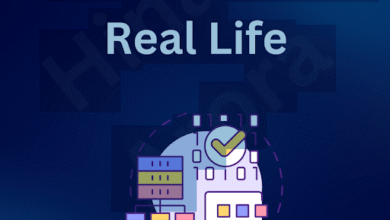Five ways to tell if your teen is using cocaine

Unfortunately, drugs have become more commonplace in society, particularly cocaine. It’s been normalised as it becomes more accessible, higher quality, and even more glorified through the likes of television, film and social media.
This can be a big worry for parents with teenagers. It’s the age when they start to discover new things, become tempted, want to rebel more and often that can lead to drug use and experimentation. And with that brings so much anxiety, from hoping they don’t be led by peer pressure, to protecting their health, to even having spiralling thoughts about understanding how affordable drug rehab cost is. It’s where a parent’s mind can stray. We know, we’ve been there.
There are telltale signs if your teenager is experimenting with drugs, especially cocaine, so if you are worried, here are five signs to look out for, of which it may be time to speak to your teen and look towards next steps…
Sudden and Unexplained Mood Swings
Cocaine is a stimulant, which means it can cause sharp changes in mood. If your teen is suddenly unusually talkative, overly confident or excitable for short periods, followed by crashes into irritability, low mood or lethargy, it could be a red flag. These highs and lows may appear without obvious triggers and can be accompanied by a short temper or emotional outbursts.
While teenagers naturally experience mood fluctuations, the shifts caused by cocaine are often more intense and inconsistent. Watch for patterns, especially following time spent out with friends or after weekends.
Changes in Sleep Patterns and Energy Levels
Cocaine disrupts the body’s natural rhythms. Teens using it may stay awake unusually late or seem ‘wired’ and restless at night. After the effects wear off, they may crash, sleeping for long periods or appearing drained and sluggish.
Keep an eye on erratic sleep schedules, especially if they’re paired with a drop in motivation or difficulty concentrating. A teen using cocaine might also suddenly seem full of energy one moment and completely wiped out the next.
Physical Signs and Paraphernalia
There are several physical indicators that may suggest cocaine use. These include:
- Dilated pupils
- Runny or frequently bleeding nose
- Frequent sniffing without signs of a cold
- Red eyes or changes in skin tone (especially paleness after a high)
- Track marks or burns (if cocaine is being injected or smoked, though snorting is more common among teens)
You may also find drug paraphernalia hidden in their room or belongings such as small plastic bags with white residue, rolled banknotes, straws, or even razor blades and mirrors used to divide lines.
Secretive Behaviour and Social Withdrawal
If your teen is suddenly secretive, guarded, or evasive about their whereabouts, new friends, or weekend plans, it may be worth paying attention. Cocaine users may isolate themselves to avoid scrutiny or spend more time with peers who also use drugs.
They may also begin lying more frequently, avoiding eye contact, or becoming defensive when asked simple questions. Increased privacy around their room, phone, or backpack could also signal concern.
Decline in School Performance and Daily Responsibilities
A marked drop in school grades, poor attendance, or loss of interest in previously enjoyed hobbies can be significant warning signs. Cocaine can impact memory, concentration and overall cognitive function, leading to poor academic performance.
Look for signs that your teen is struggling to keep up with schoolwork, frequently skipping classes, or losing interest in activities they once loved. This shift is often accompanied by neglect of personal hygiene, chores, or general responsibilities.
Should you see any of the above, then it could be time to sit them down and speak to them about this problem, or even maybe reach out for support from professionals, who can help you deal with the situation and get your teen the help they need.





